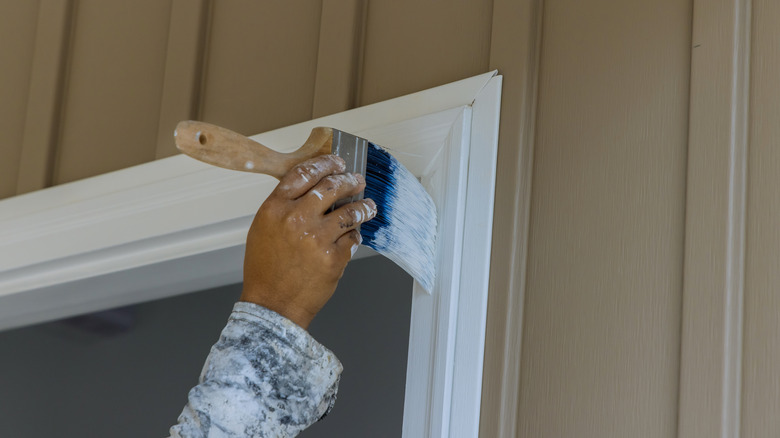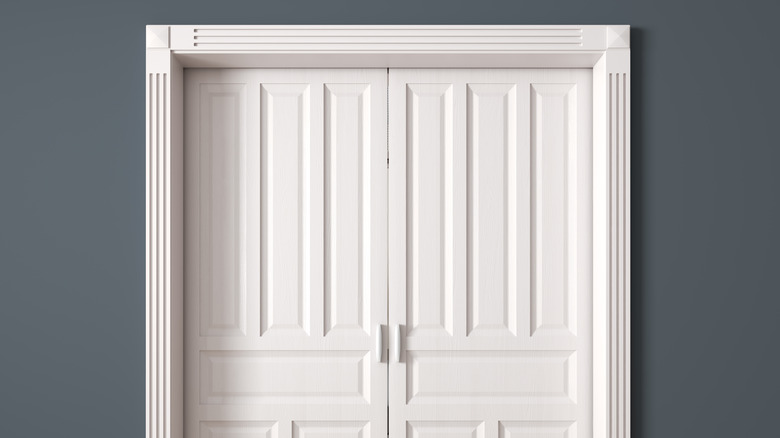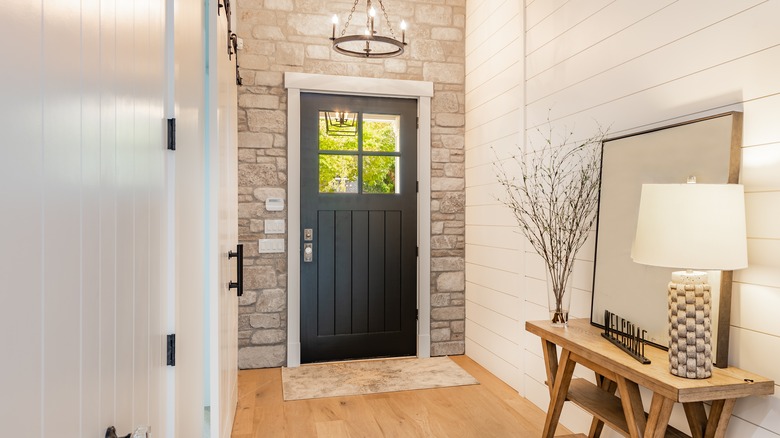The Door Painting Debate That No One Can Come To An Agreement On
When it comes to interior design choices, homeowners don't want to make potentially costly and time-consuming mistakes. So, when it comes to your paint, it's not just about what type of paint to use on your doors, but also if that paint should match or contrast the door's trim. That's the big question behind an ongoing debate in the design world, and there seems to be no agreement in sight. People have all sorts of opinions on the topic and lots of caveats. One interior designer, Charity Scott, claimed through a Instagram reel that if you are painting a door a color that isn't white, then the trim should match the door color, not the rest of the room's trim. Yet, others often opt for the opposite. Others prefer to see colored doors bordered by white trim, often matching the door color to the wall color.
Though there doesn't seem to be any universal decision to be made with this debate, that also doesn't mean there is a right or wrong answer. Most often, interior designers and just everyday folk end up with the same last sentiment: do whatever your heart desires, because it's your home. While this is great advice to live by, it can be helpful to dive deeper into the pros and cons of each design choice.
The do's and don'ts of matching door and trim paint
There are certainly pros and cons to both choices, but first let's focus on matching your trim and door color. This option can really knock things out of the park if you want to highlight and draw focus to the doorway as a statement piece, especially if you opt for a bolder color. Matching the door and trim and having them a different color than the surrounding trim can break up the room and draw guests' eyes to the doorway, creating extra interest in the space. Matching door and trim color may lend to a more modern look that can be well suited to a contemporary aesthetic.
Overall, matching your trim and door paint highlights that space. But one thing to keep in mind with this choice is that the same color for both the door and its trim results in the door looking bigger. If you have a smaller space, this might make the room feel too overwhelming. In this particular case, different colors or a lighter color could be a better design choice.
Pros and cons of opting for contrasting door and trim color
There's a risk to different door and trim color, as these bold contrasts and colors might be a dying paint trend interior designers are ready to put to rest in 2025. Yet, on the other hand, painting trim for a secret pop of color can be a great design choice, and the perfect solution for your space. A difference in door and trim paint will create a space that is especially striking. The contrast will instantly draw the eye to that area and is a smart choice if you'd like to highlight the door. If you keep your trim matching the trim of the rest of the room, it can help contain the color of the door while also drawing the eye to an uninterrupted flow through the room, resulting in a cohesive space.
Keep in mind the cons for this design choice and be intentional with your decisions. If you have continuous white trim throughout the room, but your door and wall color don't match (or complement each other), it can make the room feel pieced together with no flow. Door and wall color that are intentionally chosen for how they seamlessly blend together will create a more purposeful, well-balanced space.
But when it comes down to it, it's the intentionality that matters most. If you put thought behind your choices, and design with your preferred aesthetic in mind, there is no wrong answer to this debate!


